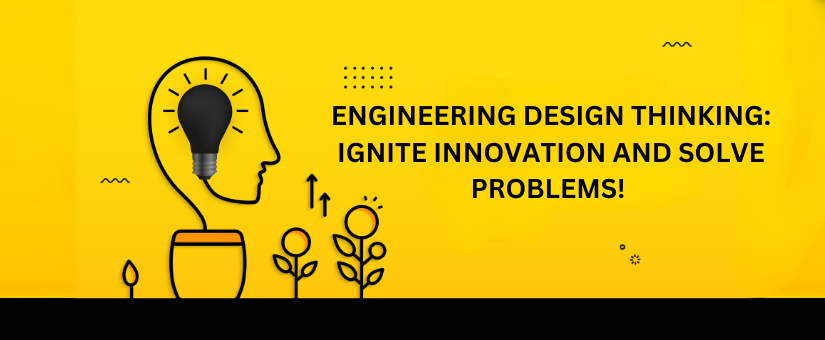Engineering Design Thinking: Ignite Innovation and Solve Problems!
Engineering Design Thinking: Your Guide to Innovation and Problem Solving
In a world that’s constantly evolving, engineers face unique challenges that demand not just technical skills but also a spark of creativity. That’s where Design Thinking comes in - a fresh approach that puts human needs front and center in problem-solving.
Let’s explore Design Thinking, why it’s essential for engineering, and how to use it in your projects.
What is Design Thinking?
Design Thinking is all about getting to know people and understanding their needs to create innovative solutions. This journey is through five key stages:
Empathize: Step into your users' shoes. What challenges do they face, and what do they truly desire?
Define: Figure out the problem you want to solve based on your insights about the users.
Ideate: Let your creativity run wild! Brainstorm as many ideas as possible, no matter how crazy they seem.
Prototype: Create quick and simple versions of your best ideas, such as sketches, models, or mock-ups.
Test: Share your prototypes with users and gather their feedback. This step is crucial for refining your solution.
Why Does Design Thinking Matter in Engineering?
Sparks Innovation: It pushes you to think outside the box, leading to unique solutions you might not have thought of otherwise.
Focuses on Users: By exploring what users need, you can craft products that are not only practical but also enjoyable to use.
Encourages Collaboration: Working with diverse teams brings different perspectives, boosting creativity and problem-solving.
Promotes Adaptability: This iterative process allows you to adapt your solutions based on real user feedback, making your designs even more effective.
How to Apply Design Thinking to Your Projects
Identify a Problem: Start by observing your environment or chatting with potential users. What issues do they face? Choose one that excites you!
Conduct Research: Dive deep into understanding your users. What do they want? Use interviews or surveys to gather insights that will shape your design.
Define the Challenge: Write a problem statement that captures the essence of the challenge. Instead of a broad issue like “better water bottles,” try something specific like, “How can we design a water bottle that keeps drinks cold for 24 hours and is easy to carry?”
Brainstorm Solutions: Gather your friends or teammates and let the ideas flow! Encourage everyone to share, no matter how wild. Sketch or jot down ideas to bring your concepts to life.
Prototype and Test: Create simple prototypes of your top ideas. Share them with users and gather feedback to see what works and what needs some tweaking.
Iterate and Improve: Refine your designs based on the feedback you receive. This ongoing cycle of testing and adjusting is critical to crafting a successful solution.
Design Thinking isn’t just a trendy term; it’s a powerful mindset that can change how you approach engineering. By focusing on empathy and creativity, you’ll be better equipped to tackle challenges and create solutions that resonate with users.
This approach aligns perfectly with the values at Sri Ramakrishna Engineering College (SREC), where innovation and practical problem-solving are emphasized in every project. So, whether you’re working on a small project or preparing for a capstone design, let Design Thinking guide you on the path to innovation, supported by the resources and community at SREC!


